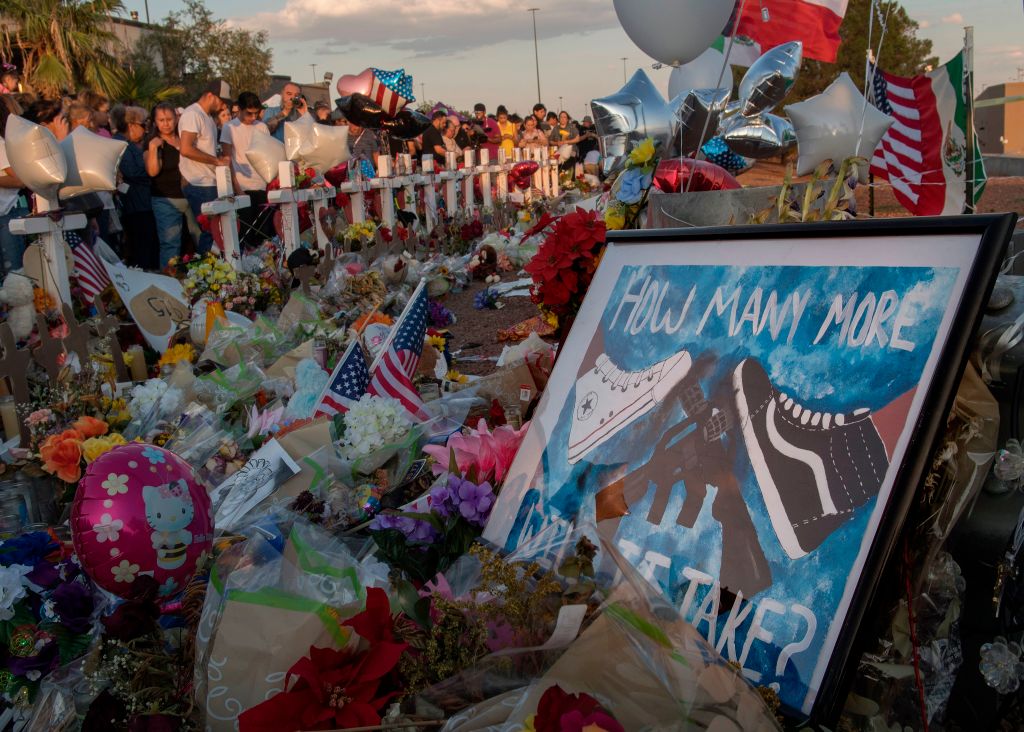
On February 14, 2018, the world stood in shock with my school as we mourned the 17 lives lost in Parkland, Fla.
First, we mourned, then we marched – all to the tune of “Never Again.” But our hearts shattered once it happened again. And again. And again. And again.
March For Our Lives may have been founded after Parkland, but the pattern of violence we fight started long before my friends and I were born. Still, in this modern era, it feels incessant, in part because there are more than 300 mass shootings a year and in part because of the role social media plays.
It’s easy to focus on the negative – the message boards where hate lurks, the conspiracy theorists who antagonize survivors and their families via Twitter. It’s easy (and frankly, understandable) to want to sign off. But after each new tragedy strikes, I stay logged on.
After the recent shootings in Chicago, Dayton and El Paso, I could not help but look toward the direct messages the March For Our Lives social media accounts receive.
This week, as with after every shooting since Parkland, we have received an influx of messages ranging from insensitive hate to fear and uncertainty of what’s to come. While it’s certainly easy to be blinded by such violent vitriol, I prefer to focus on the latter camp: the ones looking for answers after these unthinkable tragedies. Sometimes there are even those reaching out from the location of the shooting in near real time. It’s astounding.
Just imagine, you’re in your high school algebra class, trying to answer questions on logarithmic functions, when your phone rings, and then rings again, and again, with someone across the country sending you possibly the last message they will ever send. After last year’s Yountville Shooting at a Veterans Home in California, survivors were doing just that. My teacher yelled at me that day to ignore my phone, but I knew full well there was someone out there in pain, the same exact pain I had felt just weeks prior.
After the Jacksonville Landing shooting at a Madden tournament, I found myself in a similar situation: I was out to lunch with friends as I received calls and direct messages from survivors mere moments after the first shot.
These people had gone through an experience in which they thought they might not make it out alive. They don’t know what to do with themselves as they frantically come to understand their new reality, their new normal. Their ages range depending on the tragedy, with some elementary schoolers even reaching out (don’t know why they’re on Twitter but I’m there for them too).
Online platforms have connected millions and allowed survivors of gun violence to come together following tremendous loss. Yet, at the same time, sites like 8chan and Twitter have been used to connect another breed of people: the murderers and terrorists themselves. These sites are inciting violence and spreading the manifestos of multiple mass shooters, all with a history of hate and vitriol toward many minority groups.
This growing scourge of radical domestic terrorism the likes we’ve seen in El Paso and Dayton has strengthened itself through these online echo chambers. For instance, after the Poway Synagogue Shooting massacre, one 8chan user proudly published: “I’m So Pleased a Jew Church got shot up : ))))) Wish more Jews got shot up : / No worries there will be more synagogue shootups : ))))”
Does this make you uncomfortable? These are the words of our neighbors.
Social media is the double-edged sword of the modern age, with these direct messages bringing comfort and strength to those seeking ceasefire and message boards fueling the fire they wish to cease. Take Facebook, for example, a site originally designed for people to connect with friends and family. It’s turned into a propagandist paradise, used to spread misinformation both here and abroad.
To move forward as a society, we as Americans must determine where the benefits and consequences of these tools lay. Will we use them to help or harm us?
For now, my friends and I don’t sign off, not permanently at least. Someone may reach out needing to hear our advice or just looking for someone willing to listen. We unfortunately understand all too well what they’re going through.
When it comes to these shooters, however, we cannot just “thoughts and prayers” away these terrorist acts. We must proactively prevent them, finding where they organize and preventing their strikes before a single shot is fired. These groups are violent because they are scared. Their fear has poisoned too many of our neighbors, and it’s time we act to heal the toxic underbelly of America. We can put this to an end. We must open a constructive dialogue and replace their fears with education. Social media leaders should work with all of us to actively condemn and prevent stochastic terrorism, but we cannot wait until they do.
More Must-Reads from TIME
- Cybersecurity Experts Are Sounding the Alarm on DOGE
- Meet the 2025 Women of the Year
- The Harsh Truth About Disability Inclusion
- Why Do More Young Adults Have Cancer?
- Colman Domingo Leads With Radical Love
- How to Get Better at Doing Things Alone
- Michelle Zauner Stares Down the Darkness
Contact us at letters@time.com